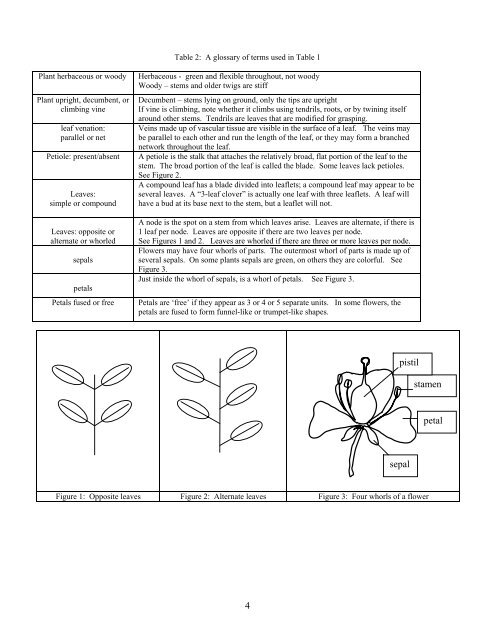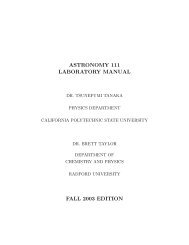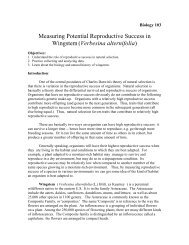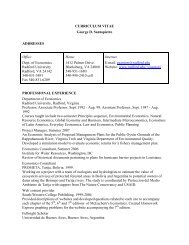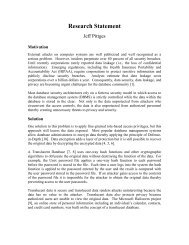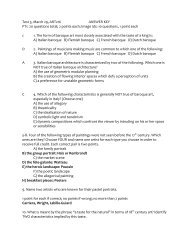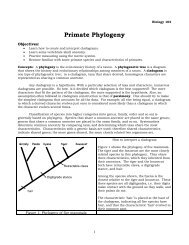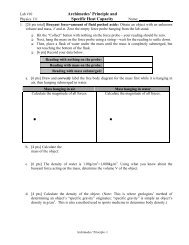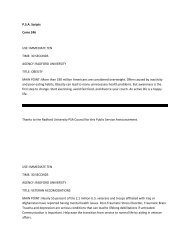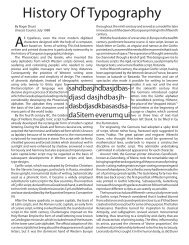Writing a Dichotomous Key to Wildflowers
Writing a Dichotomous Key to Wildflowers
Writing a Dichotomous Key to Wildflowers
Create successful ePaper yourself
Turn your PDF publications into a flip-book with our unique Google optimized e-Paper software.
Table 2: A glossary of terms used in Table 1<br />
Plant herbaceous or woody<br />
Plant upright, decumbent, or<br />
climbing vine<br />
leaf venation:<br />
parallel or net<br />
Petiole: present/absent<br />
Leaves:<br />
simple or compound<br />
Leaves: opposite or<br />
alternate or whorled<br />
sepals<br />
petals<br />
Petals fused or free<br />
Herbaceous - green and flexible throughout, not woody<br />
Woody – stems and older twigs are stiff<br />
Decumbent – stems lying on ground, only the tips are upright<br />
If vine is climbing, note whether it climbs using tendrils, roots, or by twining itself<br />
around other stems. Tendrils are leaves that are modified for grasping.<br />
Veins made up of vascular tissue are visible in the surface of a leaf. The veins may<br />
be parallel <strong>to</strong> each other and run the length of the leaf, or they may form a branched<br />
network throughout the leaf.<br />
A petiole is the stalk that attaches the relatively broad, flat portion of the leaf <strong>to</strong> the<br />
stem. The broad portion of the leaf is called the blade. Some leaves lack petioles.<br />
See Figure 2.<br />
A compound leaf has a blade divided in<strong>to</strong> leaflets; a compound leaf may appear <strong>to</strong> be<br />
several leaves. A “3-leaf clover” is actually one leaf with three leaflets. A leaf will<br />
have a bud at its base next <strong>to</strong> the stem, but a leaflet will not.<br />
A node is the spot on a stem from which leaves arise. Leaves are alternate, if there is<br />
1 leaf per node. Leaves are opposite if there are two leaves per node.<br />
See Figures 1 and 2. Leaves are whorled if there are three or more leaves per node.<br />
Flowers may have four whorls of parts. The outermost whorl of parts is made up of<br />
several sepals. On some plants sepals are green, on others they are colorful. See<br />
Figure 3.<br />
Just inside the whorl of sepals, is a whorl of petals. See Figure 3.<br />
Petals are ‘free’ if they appear as 3 or 4 or 5 separate units. In some flowers, the<br />
petals are fused <strong>to</strong> form funnel-like or trumpet-like shapes.<br />
pistil<br />
stamen<br />
petal<br />
sepal<br />
Figure 1: Opposite leaves Figure 2: Alternate leaves Figure 3: Four whorls of a flower<br />
4


